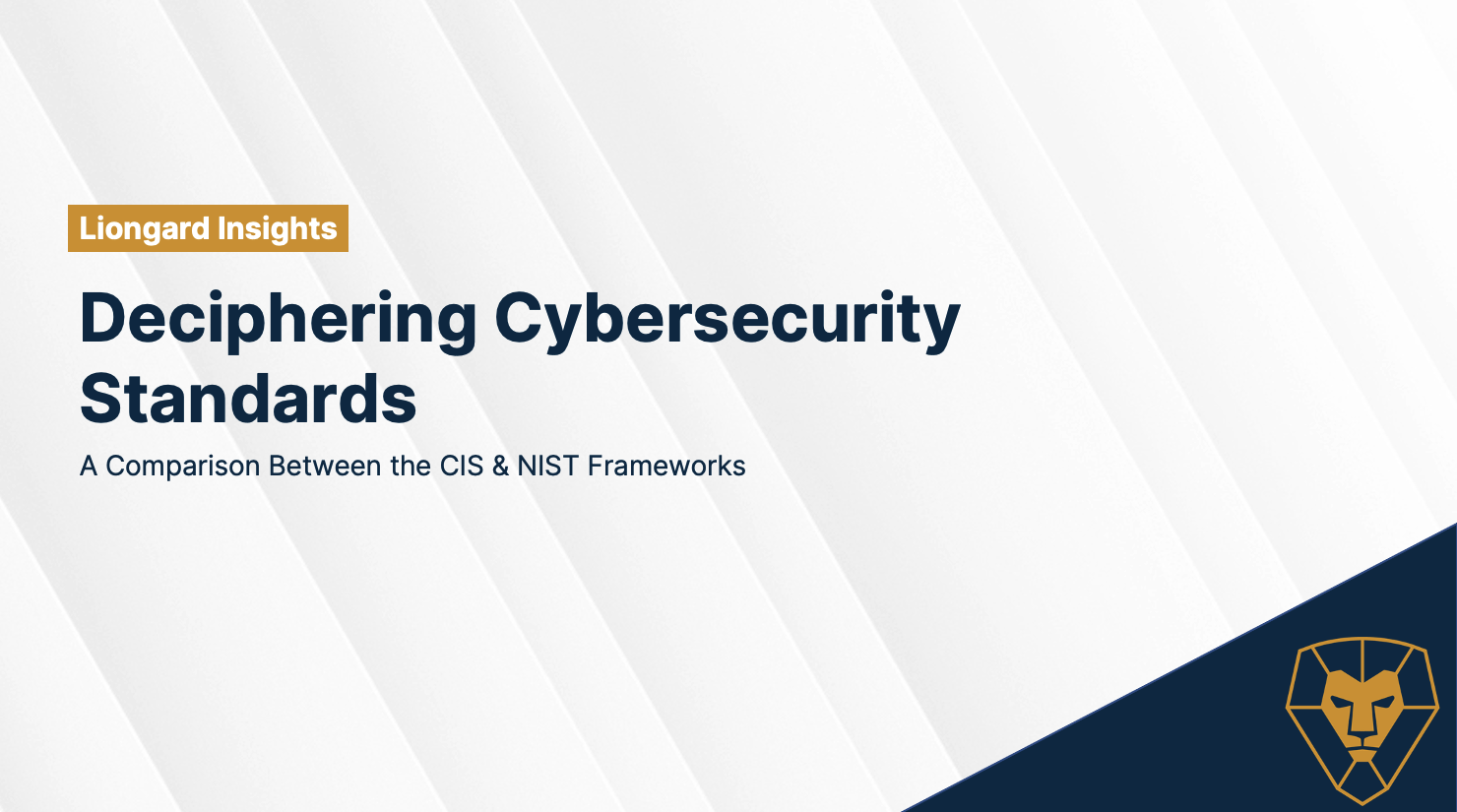Comparing the NIST & CIS Frameworks
Cybersecurity frameworks are more important than ever to ensure systems and networks safe and secure operation. These frameworks provide the following:
Systematic approaches to managing and reducing cyber risk.
Protecting critical infrastructure.
Improving an organization’s cybersecurity posture.
Among the most popular are the National Institute of Standards and Technology (NIST) and the Center for Internet Security (CIS) frameworks. This blog post will delve into a comparison of these two prominent cybersecurity frameworks.
Introduction to the NIST Framework
The National Institute of Standards and Technology (NIST) is a U.S. government agency that develops and promotes measurement standards, including those for cybersecurity. One of the NIST’s most notable cybersecurity contributions is the Framework for Improving Critical Infrastructure Cybersecurity, often called the NIST Cybersecurity Framework (CSF).
This framework provides a risk-based approach to managing cybersecurity risk and consists of three primary components: the Framework Core, Framework Implementation Tiers, and Framework Profiles. The Framework Core provides a set of activities to achieve specific cybersecurity outcomes and references examples of guidance to achieve those outcomes. Framework Profiles are the alignment of the Functions, Categories, and Subcategories with the organization’s business requirements, risk tolerance, and resources. Implementation Tiers reflect how an organization views cybersecurity risk and the processes in place to manage that risk.
To learn how Liongard supports the NIST framework, check out our blog “ENHANCE YOUR MSP’S SECURITY POSTURE WITH THE NIST FRAMEWORK“.
Introduction to the CIS Framework
The Center for Internet Security (CIS) is a non-profit entity that provides a wide range of tools, best practices, guidelines, and frameworks to safeguard private and public organizations against cyber threats. The most well-known of their contributions is the CIS Controls, a prioritized set of actions that collectively form a defense-in-depth group of best practices to mitigate the most common attacks against systems and networks.
CIS Controls fall into three implementation groups—IG1, IG2, and IG3. IG1 consists of basic cybersecurity hygiene controls and consists of 56 safeguards. This encompasses the essential actions that every organization should implement, such as inventory and control of hardware and software assets, continuous vulnerability management, controlled use of administrative privileges, and more. IG2 builds upon IG1 with an additional 74 safeguards that help security teams stay on top of organizations with more operational complexity. This includes supporting multiple teams with different risk profiles or managing regulatory compliance requirements. Lastly, IG3 adds 23 safeguards to the mix. These give security teams the tools needed to address multiple aspects of cybersecurity.
To learn how Liongard supports the CIS framework, check out our blog “FOCUSING ON THE FUNDAMENTALS: LIONGARD TALKS ABOUT THE IMPORTANCE OF CIS CONTROLS“.
Comparing NIST and CIS
While the NIST and CIS frameworks are robust and widely recognized in the industry, they have some fundamental differences.
Purpose and Approach: The NIST CSF is a risk-based approach to managing cybersecurity risk, complementing an organization’s existing cybersecurity and risk management processes. It provides a broad set of best practices that any organization can use, regardless of sector or size. The CIS, on the other hand, provides a set of specific controls that can be implemented. It prioritizes these controls to help organizations focus first on the most significant threats.
Flexibility vs. Specificity: The NIST CSF is more flexible and adaptable. It doesn’t provide a specific list of controls to be implemented but instead focuses on outcomes. This allows organizations to adapt the framework according to their unique requirements, threat landscape, and risk tolerance. Conversely, the CIS framework is more prescriptive, providing specific and prioritized controls that can be implemented to improve security.
Scope: The NIST CSF has a broader scope, covering all aspects of an organization’s risk management process. It’s designed for use in various sectors, including critical infrastructure sectors like energy, financial services, and healthcare. In contrast, the CIS controls are designed to protect systems and data from cyber threats.
Governance: While both frameworks can help with regulatory compliance, the NIST CSF has a slight edge in governance. Its holistic approach to risk management ties cybersecurity closely with overall business goals, making it more suitable for organizations that must demonstrate a strategic approach to cybersecurity to stakeholders.
The NIST and CIS frameworks offer robust guidelines for improving cybersecurity, each with unique strengths. The NIST CSF provides flexibility and a broad scope, making it ideal for organizations that need a comprehensive, adaptable approach to risk management. The CIS framework, with its specific, prioritized controls, is excellent for organizations that need a more prescriptive, practical approach to improving cybersecurity quickly.
Ultimately, the choice between the two may come down to your organization’s specific needs, risk tolerance, resources, and cybersecurity maturity. Many organizations value leveraging elements from both frameworks, tailoring their cybersecurity strategy to their particular needs and evolving threats. Remember, a cybersecurity framework is not a one-time implementation but an ongoing process that needs to be reviewed and updated regularly.
Visit our Trust Center for a complete view of Liongard’s compliance and transparency standards.
The post Comparing the NIST & CIS Frameworks appeared first on Liongard.
